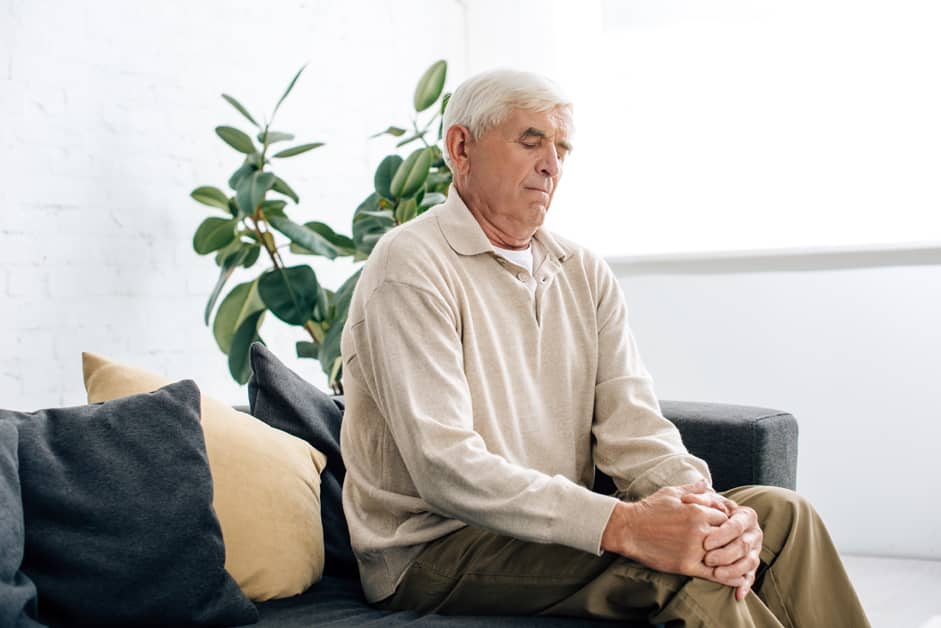Introduction
Arthritis is an umbrella term for over 100 medical conditions. It is associated with joint inflammation, pain, swelling, stiffness and decreased range of motion. Age does not matter – anyone can get arthritis.
The exact cause of arthritis varies depending on the type. But, it always leads to inflammation in one or more joints. There are two main types: osteoarthritis and rheumatoid arthritis (RA). Osteoarthritis is caused by age or injury. RA is an autoimmune condition, where the body’s immune system wrongly attacks itself.
Pain from arthritis can be mild to severe. Other symptoms include tenderness, redness and fatigue. This makes it hard to lead an active lifestyle.
Thankfully, there are treatments. These include:
- Lifestyle changes
- Medications
- Physical therapy
- Surgery (may be an option, depending on the case)
Causes of Arthritis
Arthritis is a joint disorder that is widespread. It can lead to inflammation, rigidity and ache in the joints. Reasons for this condition include age-associated shifts, a range of illnesses, damage to tissue directly or indirectly, imbalances in the immune system, hereditary factors and metabolic issues.
Let us take a deeper dive into some of the most frequent causes of Arthritis:
Age
Age is a factor in getting arthritis. Wear and tear of the body can damage joint cartilage with age. Osteoarthritis, gout, and Fibromyalgia are linked to age. Prevalence of arthritis is higher for people aged 65 or over. Poor nutrition and medication management can lead to degenerative joint disease. It is possible for anyone to get arthritis, no matter their age.
Bone density starts to decrease after 35-40 in both men and women. Bones become weaker over time, which increases the chances of osteoporosis and osteoarthritis. It’s important for people at risk to watch their diet and exercise. This helps maintain bone health and lower the chance of having arthritic complications.
Genetics
Genetics may impact the occurrence of arthritis, but it is usually complicated. A gene mutation or defect can raise the odds of getting certain types of arthritis and its complications, like erosive disease in rheumatoid arthritis or Duke’s criteria in ankylosing spondylitis.
Besides genetic susceptibilities making some people more vulnerable to certain forms of arthritis and conditions, non-genetic causes, such as bad nutrition, infection, systemic illness or stress, can also cause various kinds of inflammatory arthritis, including osteoarthritis, rheumatoid arthritis, lupus and gout.
The way genetics trigger arthritic conditions is often unclear. Studies suggest that certain “arthropathogens” (bacteria, like streptococcus) have mechanisms that make them more likely to provoke inflammation in people with a certain genetic makeup. In addition to this link between bacterial infection and genetics increasing the risk of certain arthritic conditions, there is evidence that environmental factors such as air pollution can also raise incidence.
Injury
Trauma or overuse of joints can cause arthritis. Severe injuries can immediately lead to symptoms. Injury to muscles or soft tissues of the joints can impair joint function and cause inflammation, leading to degenerative joint disease.
Fractures of bones in a joint often cause long-term problems with the joint, such as arthritis.
Repetitive activities can also damage joints with time. These activities may not cause immediate injury, but can cause OA. Occupations like construction workers, farmers, gardeners and athletes are at risk for developing slow-developing OA due to continued strain on their bodies and joints.
Overuse
Overuse is an element of arthritis development. It’s hard to prevent but needs to be noticed. People in manual labor, physical activities, and athletes may get narrowing of their joints from overusing cartilage. Over time, this grinds down the cartilage and causes inflammation. The inflammation leads to pain, and weakens the cartilage more.
Other ways overuse can lead to arthritis include:
- Repetitive stress injuries from things like typing or holding certain positions for long periods.
- Poor technique when exercising or playing sports.
- Poor posture which increases friction.
- Wearing shoes without cushioning or support.
- Sitting or standing for too long, straining muscles and joints. This affects lungs, heart, legs, arms and hips.
Symptoms of Arthritis
Arthritis is a term used for describing more than 100 distinct health conditions. These illnesses cause joint pain and inflammation. Symptoms of arthritis can be different per person and may impact diverse body parts.
Common signs of arthritis include:
- Joint soreness and tightness
- Swelling
- Reduced range of movement
- A red or warm feeling around the joint
In this part, we will delve into all the general symptoms of arthritis in-depth.
Joint Pain
Joint pain from arthritis is usually on both sides of the body. It can feel like a dull ache inside the joint. Activity, rain, cold weather, or sitting too long can make it worse. People with arthritis might feel stiff when they stand up after resting or sitting. This stiffness often happens in the morning or after not moving for a while.
In addition to pain, other signs of arthritis are swelling, redness, limited motion, warmth, and tenderness in joints. These might be linked to headaches, fatigue, fever, and weight loss. It’s important to keep track of changes. This will help your doctor figure out what’s wrong.
Stiffness
Stiffness is a common symptom of arthritis. Joints become stiff, making everyday activities hard. This usually happens when a person has been sitting or resting. Stretching and low-impact exercise can help with stiffness. Doctors may give special medications to reduce pain. Hot and cold therapy can also help. Heat packs relax muscles and cold packs reduce swelling. A physical therapist can give tips on how to safely manage stiffness.
Swelling
Swelling is a typical symptom of arthritis and can show up in different ways, such as:
- Soft tissue swelling. This includes redness, warmth and tenderness in the joints.
- Joint swelling, which can cause a bursa.
- Large joint effusion. This is when the joint becomes inflamed, filling up with fluid. It usually happens in larger joints like hips or knees.
Other physical changes connected to arthritis include:
- Stiffness due to pain and swelling that can limit movement.
- Loss of movement, with restricted range of motion due to pain and inflammation.
- Reduced strength, making it hard to lift things or do everyday tasks.
Redness
Arthritis is a common, chronic disorder. It causes joint pain and inflammation. A symptom of it is redness around the joint. The increased blood flow in the area causes this. However, other factors like swelling, tenderness, and warmth may also be present.
The joint size or shape may change. This could be a sign of severe arthritis and suggests that cartilage has been lost. There may also be an increase or decrease of movement or range of motion in small and large joints. These include ankles, elbows, wrists, and shoulders.
If you have any worries or questions about this symptom, contact your doctor. Regular monitoring and a structured plan of treatment help keep symptoms under control. This way, you can return to your regular activities without pain!
Types of Arthritis
Arthritis is an ailment that affects millions around the planet. It often causes pain and distress. But do you know there are multiple types of arthritis? Here, we’ll look at the distinct types, their causes, signs, and possible remedies. Read on to discover more about each type and how to manage the symptoms.
Osteoarthritis
Osteoarthritis is a joint issue that causes breakdown of cartilage and bone. It is the most common type of arthritis, affecting 27 million Americans. Osteoarthritis may be caused by physical stress, injury, age and obesity.
Symptoms include pain, tenderness and stiffness in the affected area. It gets worse over time. Limited movement, crepitus sounds, swelling of tissues and deformities are also signs of OA.
Treatment usually involves changing lifestyle habits like maintaining weight, exercise and nursing care. Medication may be used to reduce the pain and inflammation. Surgery is the last option if the condition is severe.
Rheumatoid Arthritis
Rheumatoid Arthritis (RA) is a chronic, systemic inflammatory disorder that can affect any joint in the body. It is an autoimmune disorder that causes inflammation and deformity of the joints leading to pain and disability.
RA is common among middle-aged adults, women more than men. In addition to joint pain and disability, it may cause bone deformities, organ inflammation, fatigue and anemia.
The reason for RA is an abnormal immune reaction against joint tissue and synovial fluid present in the joint liner or synovium. This is due to faulty autoimmune response against normal tissue antigens. The body mistakenly attacks healthy joint tissue like it’s an invader. This leads to stiffness, swelling, redness and pain in affected parts.
The exact causes of RA are unknown. It is likely due to genetic and environmental factors. Risk factors include:
- Family history of arthritis
- Smoking
- Stress
- Infections
- Certain medications
Thus early diagnosis is important to reduce severity of symptoms. Treatment includes anti-inflammatory drugs, physical therapy and exercise programs to help maintain strength and flexibility around affected joints.
Gout
Gout is a type of arthritis that occurs when uric acid builds up in the blood. The acid forms crystals in and around the joints, causing pain, redness, swelling, and stiffness. It usually affects one joint at a time and commonly the big toe. People with conditions such as diabetes, hypertension, or kidney disease have a higher chance of developing gout.
Treatment for gout involves nonsteroidal anti-inflammatory drugs (NSAIDs). Sometimes, corticosteroid medications like prednisone are also prescribed. To limit gout flares, foods and drinks that are high in purine should be avoided. These include:
- Organ and game meats
- Certain fish
- Certain alcoholic beverages
- Mushrooms
- Peas
- Beans
Drinking plenty of water can help flush out excess uric acid.
Psoriatic Arthritis
Psoriatic Arthritis is an autoimmune inflammatory joint disorder. It’s related to psoriasis, with around 30% of people with psoriasis experiencing it. Joint pain and swelling can occur, commonly in fingers and toes.
Symptoms vary person to person, and can be mild or severe.
- Swollen, painful joints
- Swollen tendons
- Pain in the back or neck
- Stiff or inflamed toe or nail joints
- Stiffness in the morning
can all be signs.
See a healthcare provider if you spot any of these symptoms. Treatment can help improve them over time.
Diagnosis
A diagnosis of arthritis is made by looking at a patient’s medical history, symptoms and physical exam results. A doctor might recommend tests such as X-rays and joint fluid analysis or blood tests.
Arthritis is hard to cure, but treatments can help. The best treatment involves a team of medical professionals, such as rheumatologists, therapists, physiotherapists and nutritionists.
Medications, exercise, lifestyle changes and non-drug therapies might provide relief from arthritis pain. Non-drug therapies include massage, heat, ice and acupuncture/acupressure.
Treatment Options
There are many choices for treatment. These include: lifestyle shifts, physical therapy, medicines, alternate therapies, and even surgery. What works best depends on the type and severity of your arthritis.
Here, we’ll talk about the different arthritis treatments and their benefits and drawbacks:
Lifestyle Changes
Healthy habits can significantly improve your health. People with medical conditions need to change their lifestyles to avoid issues. Making small changes each day can help you to have a healthier lifestyle.
- Try replacing processed meats and fats with vegetables and grains.
- Do the recommended amount of exercise per week – about 150 minutes – or just walk more.
- If you smoke, speak to your doctor about how to quit.
- Reduce stress by doing yoga or meditation.
Living a healthy lifestyle doesn’t have to be hard; even one step can make a difference!
Medications
Medications can help reduce inflammation, pain and slow down joint damage. They can also help improve mobility, delay surgery or avoid it. Some common medications are:
- Nonsteroidal Anti-Inflammatory Drugs (NSAIDs): These can be taken orally or as a topical ointment. They reduce inflammation and pain but may have side effects.
- Corticosteroids: These may be injected into the joint by a healthcare professional. They reduce abnormal immune system activity and pain/swelling at the joint site.
- Disease-modifying Antirheumatic Drugs (DMARDs): DMARDs reduce inflammation and prevent joint damage. They’re usually taken with other meds for rheumatoid arthritis, lupus and psoriasis.
- Biologic Response Modifiers: These are genetically engineered proteins that target abnormal immune responses or inflammation linked to arthritis. They ‘trick’ the body, stopping further joint damage. But they can have side effects so talk to your doctor.
Physical Therapy
Physical therapy is a key component of many arthritis treatments. PTs can teach you how to handle the pain, grow muscle strength, and increase your range of motion. Usually, PTs use exercises to decrease discomfort, maintain range of motion and flexibility, enhance strength, help with movement and give education about the illness. Therapeutic modalities like heat, cold, ultrasound, and electrical stimulation can give temporary relief.
PT also provides advice on lifestyle changes, such as exercise or weight loss, that can help reduce symptoms of arthritis.
Surgery
Surgery may be necessary if arthritis causes severe pain or stops movement. Different types of surgery are available, depending on the type of arthritis and where it is located.
Common surgeries for arthritis include:
- Joint replacement: Doctors remove the sick parts of a joint, then put in an artificial one. This helps reduce pain and make movement easier.
- Joint fusion: Bones are joined together to make one bone. This immobilizes the joint to reduce pain.
- Arthroscopy: A thin tube is inserted in the joint to repair damage and take out fragments like bone chips.
- Osteotomy: Bones are cut and moved, creating more space in the joint to help with movement.
Conclusion
Arthritis is a frequent health issue. It affects each person in a singular way. Recognizing the causes and symptoms of arthritis is significant to find the right treatment or self-care for you.
If you have joint pain or other signs of arthritis, go to the doctor. They can give you a precise diagnosis and decide the best care for you. Having an exact diagnosis is necessary for proper care and a better life.
Frequently Asked Questions
Q: What is the most common type of arthritis?
A: Osteoarthritis is the most common type of arthritis, affecting millions of people around the world.
Q: What are the symptoms of arthritis?
A: Symptoms of arthritis can include joint pain, stiffness, swelling, and difficulty moving the affected joints.
Q: What are the treatment options for arthritis?
A: Treatment for arthritis can include lifestyle changes, medications, physical therapy, and in some cases, surgery.





